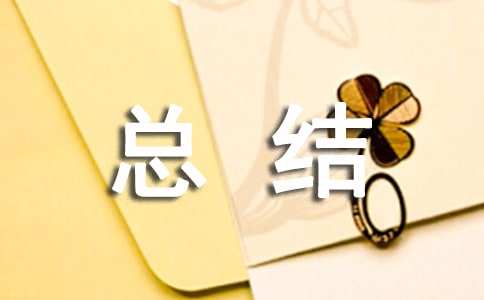下面是小编为大家整理的2023年初一英语上册知识点归纳总结五篇,供大家参考。

在平时的学习中,大家最熟悉的就是知识点吧?知识点就是掌握某个问题/知识的学习要点。下面是的小编为您带来的初一英语上册知识点归纳总结优秀5篇,如果能帮助到您,小编的一切努力都是值得的。
初一英语知识点上册总结归纳 篇一
单数句变复数句
1、 可数名词单数要变为其相应的复数形式。
It is a box.→ They are boxes.
2、 各个人称代词要由单数形式变为复数形式。
She is a girl.→ They are girls. I am at home.→ We are at home.
3、 am或is 要变为are.
He is a teacher. → They are teachers.
4、 指示代词this或that要分别变为these或those。
This is a pencil.→ These are pencils.
5、 不定冠词a/an要去掉(固定搭配例外)。
It is a black cat.→ They are black cats.
6、 man或 woman做定语修饰可数名词,在整个句子变成复数的情况下也要变成 men或women.
She is a woman teacher.→ They are women teachers.
注意:在单数句变复数句时,普通单数变为复数形式,但当名词修饰名词时,起修饰作用的名词不做变化。名词修饰名词常用单数。(man, woman除外)
This is a apple tree.→ These are apple trees.
初一上册英语知识点归纳总结 篇二
一、基数词(表示数量多少的词,大致相当于代数里的自然数)
zero, one, two, three, four, five, six, seven, eight, nine, ten, eleven, twelve, thirteen, fourteen, fifteen, sixteen, seventeen, eighteen, nineteen, twenty, twenty-one, twenty-two, twenty-three,twenty-four, twenty-five, twenty-six, twenty-seven, twenty-eight, twenty-nine, thirty, forty, fifty, sixty,seventy, eighty, ninety, one hundred,one hundred and one。
二、一般疑问句及特殊疑问句
1、一般疑问句:能用Yes或No来回答的问句。一般疑问句句尾读升调。
2、特殊疑问句:不能用Yes或No来回答的问句。特殊疑问句句尾读降调。
三、可数名词变复数
可数名词变复数时,有规则变化和不规则变化两种。
1、规则变化:
1)一般情况直接在词尾加“-s ”,如:cake-cakes, bag-bags, day-days, face-faces, orange-oranges等;
2)以s, x, sh, ch结尾的词,要在词尾加“-es ”,如:bus-buses, watch-watches, box-boxes等;
3)以辅音字母加y结尾的词,变y为i再加“-es ”,如:baby-babies, country-countries, family-families等;
4)部分以f (e)结尾的词,变f (e)为“ves ”,如:knife-knives, half-halves等;
5)以o结尾的词,加“-s ”或“-es ”,如:zoo-zoos, photo-photos, tomato-tomatoes, potato-potatoes等。记忆口诀:除了“英雄”hero外,凡是能吃的,加“-es ”,不能吃的加“-s ”。
2、不规则变化:
1)改变单数名词中的元音字母:man-men, woman-women, foot-feet, tooth-teeth等;
2)单、复同形:sheep-sheep, Chinese-Chinese, Japanese-Japanese等;
3)其他形式:mouse-mice, child-children等。
初一英语上册知识点总结 篇三
1、动词的种类(四类)
系动词如be(is am are);情态动词如can 、may、need;助动词( do does);行为动词如take 、bring、eat、have(has)、like、sell、buy、sale、play、see、find、go、watch、thank、think等
2、动词的第三人称单数(与名词的复数一样)
如eat(eats) take (takes) buy (buys) play (plays) have(has) are (is)
3、动词的时态(一般现在时)
( 1)含有系动词的
I’m a Chinese boy 。
She is twelve 。
He is Tim’s brother 。
Her mother is an English teacher 。
含有系动词的句子在变一般疑问句时只将“主语和系动词交换位置”,上面句子变成一般疑问句时分别为
Are you a Chinese boy ?(注意第一人称通常变为第二人称)
Is she twelve ?
Is he Tim’s brother ?
Is her mother an English teacher ?
含有系动词的句子在变否定句时只须“在系动词的后边加上not”,前面的几个了陈述句变否定句分别为
I’m not a Chinese boy.
She isn’t twelve 。
He is not Tim’s btother 。
Her mother isn’t an English teacher 。
(2)含有情态动词的句子( can ),
She can play basketball.
His mother’s cousin can sing many English songs.
含有情态动词的句子在变一般疑问句时只须将“主语和情态动词交换位置”,上面两句变一般疑问句分别为
Can she play basketball ?
Can his mother’s cousin sing many English songs ?
含有情态动词的句子在变否定句时直接在情态动词的后边加上not ,上面两个陈述句变否定句分别为
She can not play basketball 。
His mother’s cousin can not sing many English songs 。
(3)含有行为动词的句子
We have many friends.
They watch TV at 7 in the evening 。
The students take their books to school 。
I have lunch at school 。
You have a sister 。
1含有行为动词的句子在变一般疑问句时要在原句子的前面加do.上面的句子变成一般疑问句分别为
Do you have many friends ?
Do they watch TV at 7 in the evening ?
Do the students take their books to school ?
Do you have lunch at school ?
Do you have a sister ?
2含有行为动词的句子在变否定句时只须在行为动词前加don’t 。上述五个陈述句变否定句分别为
We don’t have many friends.
They don’t watch TV at 7 in the evening 。
The students don’t take their books to school 。
I don’t have lunch at school 。
You don’t have a sister 。
3含有行为动词的句子,当主语是第三人称单数时,行为动词要加s (或es)如:
She has a red pen 。
He has eggs for breakfast 。
Her mother buys a skirt for her 。
She likes thrillers 。
My brother watches TV every evening 。
He wants to go to a movie 。
含有行为动词的句子,当主语是第三人称单数时,变一般疑问句要“在原句子的前面加上does ,同时行为动词要还原”。上面的句子变成一般疑问句分别为:
Does she have a red pen ?
Does he have eggs for breakfast ?
Does her mother buy a skirt for her ?
Does she like thrillers ?
Does your brother watch TV every evening ?
Does he want to go to a movie ?
含有行为动词的句子,当主语是第三人称单数时,变否定句时“在行为动词前面加does’nt ,同时原行为动词要还原”。上面的句子变否定句分别为:
She doesn’t have a red pen 。
He doesn’t have eggs for breakfast 。
Her mother doesn’t buy a skirt for her 。
She doesn’t like thrillers 。
My brother doesn’t watch TV every evening 。
He doesn’t want to go to a movie 。
初一英语知识点上册总结归纳 篇四
一、 一般现在时
动词时态为一般现在时。
第一、 第二人称以及第三人称的复数形式做主语,动词均用原形。 第三人称单数做主语,动词要用单三形式。
二、 一般过去时
表示过去发生的`事情。
动词时态为过去时。
要注意不规则动词的变形。
三、 一般将来时
① 表示未来发生的事情。
② 一般以情态动词will为标志词。
例:I will go to the park with my mom tomorrow.
③ be+(going)+ to+动词原形或 be +动词ing形式也可表示将来时。
四、 名词
常考的分类是可数名词和不可数名词
有些可数名词的复数形式很特别。例:fish—fish,mouse—mice
五、 代词
代词主要有:
人称代词
第一人称:I,we
第二人称:you
第三人称:he, she, they
物主代词
① 形容词性物主代词:
第一人称:my, our
第二人称:your
第三人称:his, her, their
② 名词性物主代词
第一人称:mine, ours
第二人称:yours
第三人称:his, hers, theirs
初一英语上册知识点总结 篇五
一、48个国际音标及26个英文字母的正确书写
要熟练掌握元音和辅音,5个元音字母(a, e, i, o, u),字母的正确占格及单词间距。
二、be动词的用法
be动词有三种变形,分别是:am, is, are。记忆口诀:
“我”用am, “你”用are, is用于“他、她、它”;单数全都用is,复数全部都用are。
三、人称及人称代词的不同形式(主格和宾格)
1、三种人称:第一人称(I, we),第二人称(you, you),第三人称(he, she, it, Maria)。
2、人称代词的主格,即人称代词位于句子主语位置时的形态:I, We, You, You, He, She, It, Maria。
3、人称代词的宾格,即人称代词位于句子宾语位置时的形态:me, us, you, you, him, her, it。
4、形容词性物主代词:my, our, your, your, his, her, its, their。
5、名词性物主代词:mine, ours, yours, yours, his, hers, its, theirs。
6、反身代词:myself, ourselves, yourself, yourselves, himself, herself, itself, themselves。
四、基数词(表示数量多少的词,大致相当于代数里的自然数)
zero, one, two, three, four, five, six, seven, eight, nine, ten, eleven, twelve, thirteen, fourteen, fifteen, sixteen,
seventeen, eighteen, nineteen, twenty, twenty-one, twenty-two, twenty-three,twenty-four, twenty-five, twenty-six,
twenty-seven, twenty-eight, twenty-nine, thirty, forty, fifty, sixty,seventy, eighty, ninety, one hundred,one hundred and one。
五、一般疑问句及特殊疑问句
1、一般疑问句:能用Yes或No来回答的"问句。一般疑问句句尾读升调。
2、特殊疑问句:不能用Yes或No来回答的问句。特殊疑问句句尾读降调。
六、可数名词变复数
可数名词变复数时,有规则变化和不规则变化两种。
1、规则变化:
1)一般情况直接在词尾加“-s ”,如:cake-cakes, bag-bags, day-days, face-faces, orange-oranges等;
2)以s, x, sh, ch结尾的词,要在词尾加“-es ”,如:bus-buses, watch-watches, box-boxes等;
3)以辅音字母加y结尾的词,变y为i再加“-es ”,如:baby-babies, country-countries, family-families等;
4)部分以f (e)结尾的词,变f (e)为“ves ”,如:knife-knives, half-halves等;
5)以o结尾的词,加“-s ”或“-es ”,如:zoo-zoos, photo-photos, tomato-tomatoes, potato-potatoes等。记忆口诀:除了“英雄”hero外,凡是能吃的,加“-es ”,不能吃的加“-s ”。
2、不规则变化:
1)改变单数名词中的元音字母:man-men, woman-women, foot-feet, tooth-teeth等;
2)单、复同形:sheep-sheep, Chinese-Chinese, Japanese-Japanese等;
3)其他形式:mouse-mice, child-children等。
七、简单句的成分及主谓一致原则
最基本构成:主语+谓语+宾语,其中谓语由动词来充当。
主谓一致原则,就是句子的谓语要始终与主语保持数量上的一致性。当主语是第三人称单数(简称“三单”)时,谓语动词也要相应变成单数形式;当主语非“三单”时,谓语动词就用原形。实意动词变“三单”的规则如下:
1)一般动词在词尾加“-s ”,如:like-likes, tell-tells, play-plays等;
2)以字母s, x,ch, sh结尾的动词加“-es ”,如:guess-guesses, teach-teaches, watch-watches等;
3)以o结尾的动词一般加“-es ”,如:do-does, go-goes等;
4)以辅音字母加y结尾的动词,先变y为i,再加“-而是”,如:fly-flies, carry-carries等;
5)have的三单形式是has。
八、冠词的用法(名词前面必须要有冠词)
冠词分为定冠词(the)和不定冠词(a, an)两种。
1、定冠词the表示“特指”,可译为“这个”、“那个”、“这些”、“那些”。
2、不定冠词a, an用来表明(可数)名词的数量是“一个”。an用于以元音开头(注意不是以元音字母开头)的单词前,a则英语非元音开头的单词前。
3、不定冠词a, an与基数词one的区别是:不定冠词不是刻意强调“数量”,而基数词则强调“数量”。
九、助动词(do, does )的用法
只有实意动词作谓语时才涉及使用助动词。以like为例:
1)当句子为肯定句时不涉及使用助动词,只涉及“主谓一致”原则。 eg : I like English a lot.
Michael likes Chinese food very much.
2)当句子为否定句时,要根据主语的人称来决定使用相应的助动词:当主语为“三单”时,要使用does;当主语为“非三单”时,用助动词原形do。例如把下列句子变否定句:
Kangkang likes math.----Kangkang doesn"t like math. They like sports.------They don"t like sports.
3)当句子变疑问句时,同样要根据句子的主语来决定在句首使用Do或Does.例如下列句子变问句:
Michael likes Chinese Food.----Does Michael like Chinese food? Yes, he does./ No, he doesn"t.
Jane and Helen like music.----Do Jand and Helen like music? Yes, they do./ No, they don"t.
十、名词所有格
1、Kangkang"s books;Tom and Helen"s desk; Ann"s and Maria"s bikes;
2、用of表示“。.。.。.的”,但要从of后往of前翻译:a book of mine(我的一本书)
3、have与of的区别:
have一般表示“主动拥有”,往往用于有生命的人或动物;无生命的物体一般不能“主动拥有”,表示所属关系时要用of。例如: I have a new bike. She has two big eyes.
a door of the house
十一、课本中的知识点
1、Unit 1 ——Unit 2
1)问候语:
Good morning/ afternoon/ evening.
How are you?---Just OK, thank you. How are you?---Not bad, thanks.
Hi! Hello!
How do you do?







